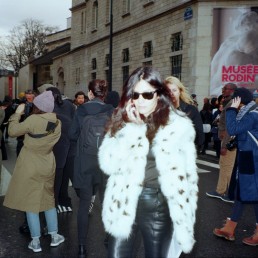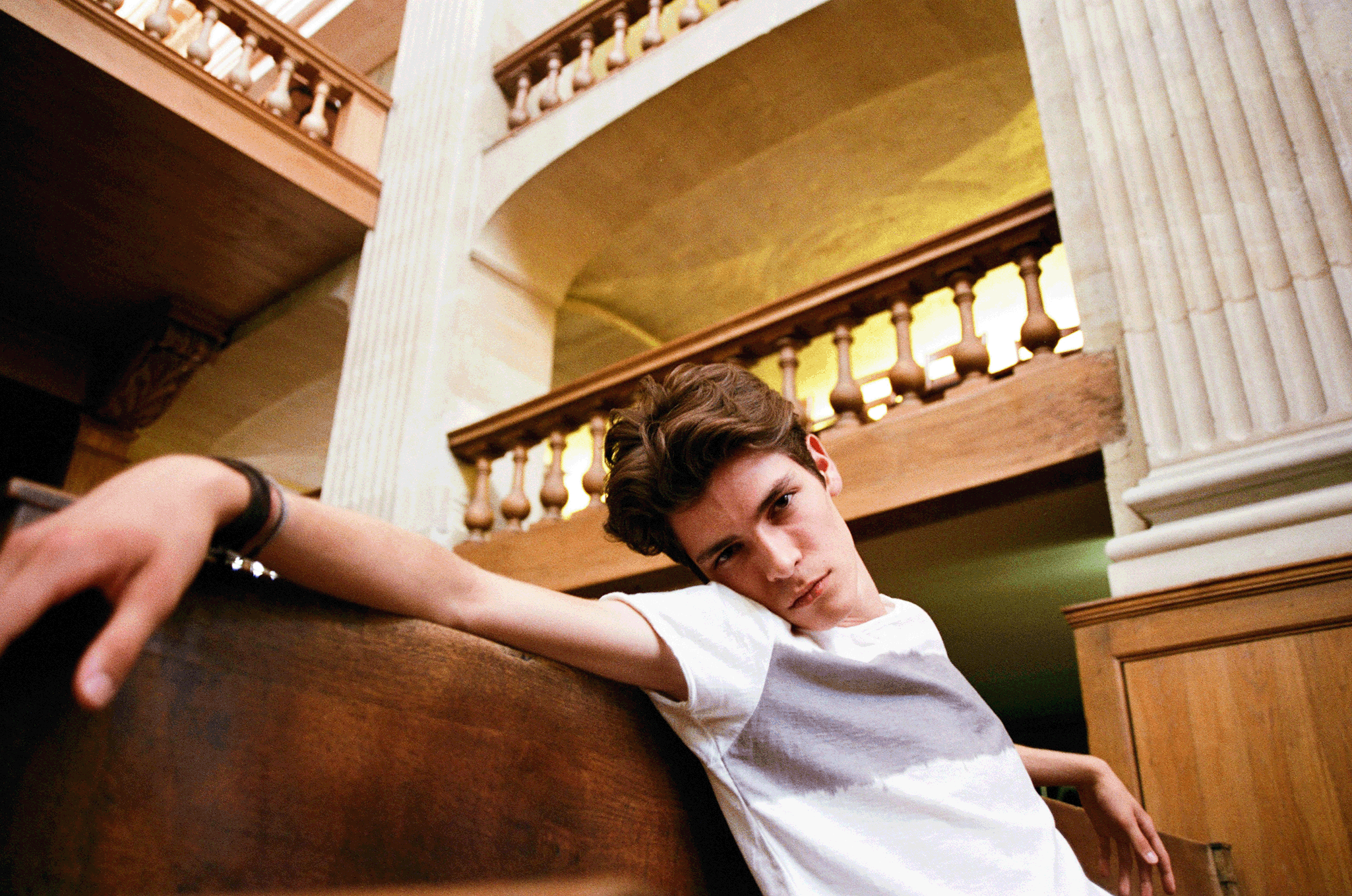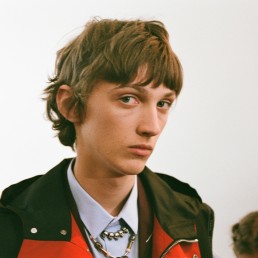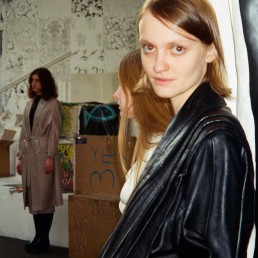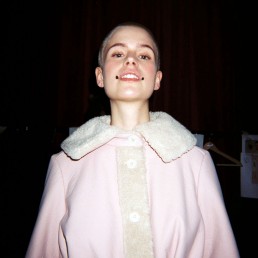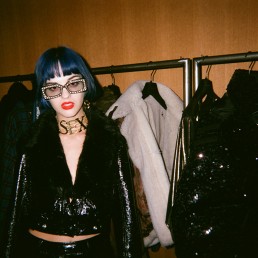Designer Chiara Zuccolotto is more than your favourite horse-girl aesthetics. She has quietly been establishing a reputation for the rare intersection of technical precision and couture artistry.
In 2014, she founded her label that began as an exploration of performance wear for equestrians and has since evolved into a celebration of movement, craftsmanship, and refined femininity. After studying at the Paris American Academy, she turned to couture techniques to incorporate into her universe, which was later realized with her off-schedule couture debut at the Westin Vendôme in Paris.
In an industry racing toward reinvention, her quiet insistence on integrity of craft, of conscience, feels not just modern but timeless. Her designs are a study in contrasts: sculptural yet weightless, functional yet opulent. Each piece blends advanced materials with hand-finished detailing, proving that technical innovation can coexist with romance. Except for Sarah Burton, who showed her sophomore collection at Givenchy, most of the Creative Directors making their Paris Fashion debut at new houses this past season are men. Roughly four out of five fashion students are women. Zuccolotto, consciously or unconsciously, is ready to break fashion’s patriarchy, not just for her, but for women everywhere in the industry.
In our recent conversation, Zuccolotto reflected on her formative years, made up of ateliers, art, hands-on craftsmanship, and how being a horse whisperer has influenced her. Photographer Louise Reinke captured her pieces backstage and off stage in Paris.

Can you tell us a bit about your journey into fashion design and what first drew you to this field?
It’s hard to pinpoint where it began. I think fashion was simply part of me. One of my earliest memories is sitting at my grandmother’s house, turning the pages of Vogue, completely enchanted by the gowns. I started sketching dresses before I even knew what design was. I still have some of those drawings.
I’ve competed in equestrian show jumping my entire life, and the equestrian world is deeply a part of me. It’s where I find peace; I often joke that the horses whisper ideas to me. I’ve always been fascinated by fit and tailoring, and equestrian show coats hold a special place in my heart because of their history and precision. That’s what led me to create Zuccolotto, my first equestrian show coat line.
Eventually, I studied couture at the Paris American Academy in 2017, and my first show was with Galia Lahav during Paris Fashion Week. Working backstage, surrounded by gowns I’d once only seen in Vogue, felt like a full-circle moment. Watching Galia Lahav and Sharon Sever quietly check every piece before it went out on the runway, I knew that one day I wanted to create that same kind of moment, to have people gather to see what I’ve built and contribute my own chapter to fashion history.
How would you describe your aesthetic, and how has it evolved since you first began designing?
My aesthetic has always been rooted in the traditions of equestrian tailoring and true couture. It’s about fit, silhouette, and the art of making something that highlights the body. When I was younger, I experimented with color, but over time I began to let my designs form more organically, leaning toward black and gold. When I was first in Paris in 2017 studying couture, we visited the Balenciaga, l’œuvre au noir exhibition, a tribute to “the most couture of couturiers.” That experience solidified my belief that a well-designed piece doesn’t need embellishment to be powerful. The structure, the core of a design, is what endures.
Feather work has become one of the most defining elements of my aesthetic. It’s a technique I first discovered at the Paris American Academy, and I never expected it to resonate with me so deeply. There’s both beauty and pain in working with feathers. As an animal lover, I’m deeply aware of their origin and take pride in sourcing ethically and wasting nothing.
To me, feathers symbolize freedom, transformation, and the ability to rise above. They mirror my creative journey — delicate yet resilient, elegant yet disciplined. Working with them reminds me that beauty often emerges from complexity, and that couture, at its core, is about giving form to emotion.

Can you walk us through your creative process—where does a new collection usually begin for you?
My creative process is rooted in intuition and dimension. I drape before I sketch, not to test fabric, but to see the design three-dimensionally, to feel the silhouette and presence of the piece in the world. It’s about understanding how it exists in space, how it carries itself, how it speaks before a single line is drawn.
That comes from my equestrian background. Working with horses teaches awareness — posture, balance, and energy — how presence alone can command attention. That same awareness lives in how I design. In university, my professors wanted sketches first, but for me, the drape is where the soul of the piece reveals itself. Later, I learned that Elsa Schiaparelli worked in the same way.
And Cristóbal Balenciaga. What role do craftsmanship and technique play in your work?
Craftsmanship and technique are everything to me, the heartbeat of couture and the soul of what I create. I’ve always felt a deep responsibility to protect the traditional methods that built this industry while continuing to evolve my own skill set. My work is a constant conversation between heritage and innovation, discipline and emotion.
We live in a generation shaped by instant gratification, where speed often overshadows substance. But couture isn’t meant to be rushed; it’s meant to be earned. Every stitch carries intention; every seam holds a story. I’ve always wanted to stand for patience, craftsmanship, and mastery , the kind of work that doesn’t bend to trends or timelines. One day, I hope a young designer walks through an exhibition of my work and feels the same wonder I once did to see not just the silhouette, but the precision and love woven into every detail. Because that’s what true couture is: work that outlives you.
You decided to show twice in Paris. Do you feel that Paris offers something unique compared to other fashion capitals, and if so, what?
For me, showcasing in Paris was never really a question; it was the only option that made sense. Paris has always carried a kind of sacredness when it comes to fashion. It’s not just a city; it’s a standard.
There’s an honesty and integrity in Paris that I deeply respect. The expectations are high, the bar for craftsmanship even higher, and you must earn your place through skill and devotion, not hype. That’s what I love most about it. I was invited to show in Milan and Dubai, but I knew the beginning of my story belonged in Paris. It’s where couture was born, and honoring that lineage while contributing my own voice felt like the only right way to begin.

How did your studies at the Paris American Academy shape your vision and approach as a designer?
The Paris American Academy completely changed my life. Before I went, I knew I had creativity in me, but I didn’t know how to channel it into something that could stand alongside the greats. That program gave me the piece of history I had been searching for, not just technical knowledge, but truth. At PAA, you aren’t just taught couture; you live it. You feel what it means to belong to a craft that demands excellence, not shortcuts. My professors were brilliant; they didn’t try to change who I was, but they refined me. They taught me how to trust my instincts, respect the process, and honor the lineage of couture while building my own voice within it.
The Academy gave me hands-on experience and an honest look at what it really takes to exist in this world—precision, discipline, and a commitment to constant growth. What I learned there went beyond technique; it was about respect—for the garment, for the process, and for the generations of artists who came before us. That time in Paris awakened something that had always been there—a certainty that this is what I was meant to do, and that the story I’m writing with my work has only just begun.
Fashion is known to be competitive, but it is also very collaborative. Were there any mentors, teachers, or peers who had a particular influence on your development?
I’ve always believed that fashion, much like the equestrian world, thrives on both competition and community. In the arena, there’s this unspoken bond between riders — we all train to win, but we walk the course together, discuss each jump, and share the same pressure. It’s competitive, yes, but it’s also deeply respectful. That same energy exists in fashion.
Two teachers made a lasting impact on me. Madame Nicole from the Paris American Academy helped me perfect the fit on one of my earliest equestrian coat designs. I still have that sample hanging in my studio. She was kind, incredibly skilled, and pushed me toward my best work without ever breaking my confidence.
And my sketching professor, Professor Radenbaugh, taught me how to harness one of my greatest differences. I’m tetrachromatic — meaning I have an additional color receptor in my eyes that allows me to perceive subtle shifts in hue and tone most people can’t see. She never tried to simplify that or make me fit a mold. Instead, she taught me to use it with precision and purpose. Both of them helped me embrace what made me different and turn it into strength — something I carry with me in every design.
 How do you see your work fitting into today’s fashion landscape, where conversations about sustainability and authenticity are so important?
How do you see your work fitting into today’s fashion landscape, where conversations about sustainability and authenticity are so important?
For me, authenticity has always come before everything else. Fashion is an art form, but it’s also a responsibility, one that asks us to create with intention and respect.
With my equestrian show coat line, we implement sustainable practices wherever possible — using biodegradable corn-starch garment bags and ensuring our production is ethical at every stage. For my couture brand, I hold the same values. Sustainability, to me, isn’t just environmental; it’s emotional. It’s about creating work that carries meaning — pieces that are cherished, not consumed and forgotten.
When you create something built to endure, you’re inherently choosing sustainability. My goal has always been to merge craftsmanship, consciousness, and beauty to build fashion that honors both the world we live in and the legacy we leave behind.
What challenges have you faced as an emerging designer, and how have you navigated them?
As an emerging designer, the challenges have been as much about perception as process. When I first started my equestrian line, Zuccolotto, I was very young, and people didn’t always take me seriously. If I didn’t mention my age, they saw the work — but once they knew, the tone shifted.
I remember attending my first sourcing show with almost no budget — just determination and a clear vision. Most vendors dismissed me, but one textile mill owner took the time to talk with me. He saw something in me that others didn’t, and I’ll never forget that. Thirteen years later, we still keep in touch, and his mill produced my first fabrics.
For my couture career, being an American designer in Europe brings its own challenges: visas, logistics, and earning respect in a space so rooted in heritage. But I don’t see that as a disadvantage; I see it as an honor. The process of learning and earning respect in Paris is something I take great pride in. Paris holds itself, and its designers, to a higher standard, and I respect that more than I can express.

In your view, what makes a collection resonate with a global audience while still feeling personal?
I think a collection resonates most when it’s born from something real—not trend or concept but feeling. When a design comes from that place, people can sense it. It carries a certain energy, something raw and unfiltered, that allows the world to glimpse the emotion behind the work—the part of the designer that isn’t perfected, only felt.
If you could collaborate with any brand or creative, who would it be and why?
Dior. It has always been one of my greatest inspirations when it comes to fit, structure, and boldness in silhouette. There’s a timeless confidence in the way Dior designs, a respect for femininity that never feels forced or fragile.
I’d also love to collaborate with Maison Février. Their feather work is extraordinary, and I’ve been fascinated by the way they merge traditional craftsmanship with innovation. I’ve been obsessed with their recent feather saddle — it’s such a beautiful blend of equestrian influence and couture artistry. If I ever had the opportunity to create a piece alongside Dior or Maison Février, especially something rooted in feather work, it would feel like closing the circle between where I began in the equestrian world and where I’m going in couture.
What do you hope people feel when they wear your designs?
I hope they feel as if they’re wearing glamorous armor to take on the world — that the pieces empower them and help them feel like their best self. I hope they feel that they’re not alone, and that the things which seem impossible sometimes do come to life. More than anything, I hope they feel inspired.





Backstage with Chiara Zuccolotto at Paris Fashion Week; photography by Louise Reinke
